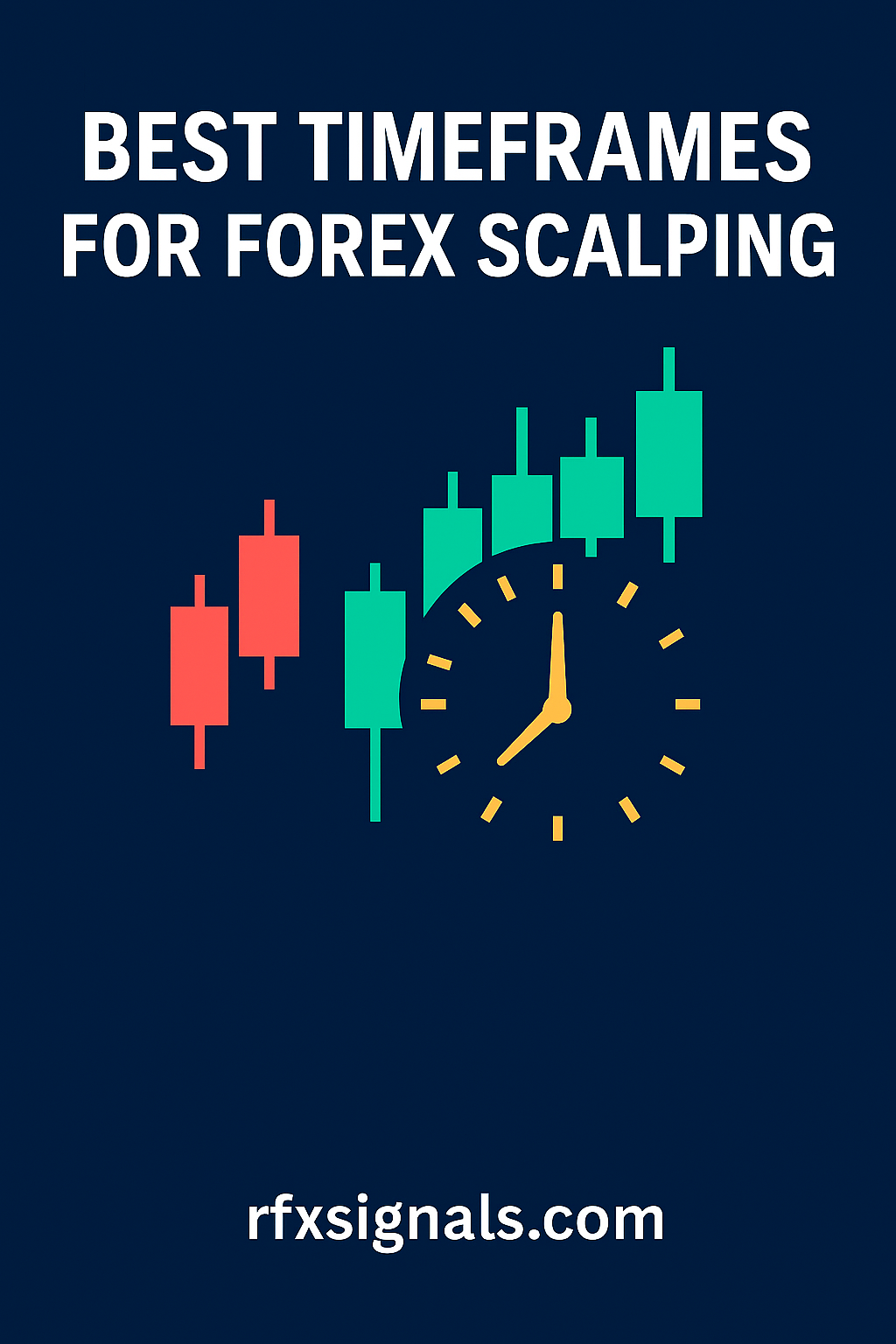
Best Timeframes for Forex Scalping — A Practical Guide
Scalping is a high-frequency intraday trading style that seeks to capture small price moves repeatedly throughout a session. Because scalpers trade quickly and frequently, timeframe selection directly affects signal quality, noise, risk management, and execution. This article explains the best timeframes for scalping, why they work, how market sessions influence them, and practical rules to implement on platforms like MT4/MT5.
Why timeframe matters for scalping
Timeframe choice determines the balance between noise and signal. Very low timeframes (ticks, 1s, 1m) show micro-movements and generate many signals — but many are false. Longer intraday charts (5m, 15m) reduce noise and allow clearer setups but produce fewer trades. Scalpers must choose the shortest timeframe that still provides a reliable edge, considering spread, slippage, and execution speed.
Common scalping timeframes and their trade-offs
1-minute (M1)
M1 is the fastest common scalping timeframe. It allows traders to capture micro-moves and enter multiple trades per session. Pros: many opportunities, tight targets. Cons: extreme noise, high false-signal rate, and high impact from spread and slippage. M1 is best for traders with ultra-fast execution, low spreads (ECN accounts), and systematic rules.
3-minute & 5-minute (M3, M5)
M3 and M5 are popular for a balance between activity and clarity. They offer fewer false signals than M1 while retaining frequent trade opportunities. Many profitable scalping systems are built on M5 because it smooths tick noise and still fits the scalper’s intraday rhythm.
15-minute (M15)
M15 is on the edge between scalping and intraday trading. It suits traders who prefer fewer trades per day but larger, more reliable moves. M15 scalping reduces the impact of spreads but requires slightly larger stops and more capital per trade.
Session selection — when to scalp
Scalping performance depends heavily on session volatility. The best windows are when two major sessions overlap — these are the moments liquidity and momentum spike.
- London session (08:00–17:00 GMT) — high liquidity and many breakout opportunities.
- New York session (13:00–22:00 GMT) — continues London momentum and offers strong moves during US news.
- London–New York overlap (13:00–17:00 GMT) — the most active and popular time for scalpers.
- Tokyo/London overlap — shorter and less busy; best for certain Asian pairs.
Matching timeframe to currency pairs
Choose pairs with tight spreads and ample liquidity for the chosen timeframe. For example:
- EUR/USD, GBP/USD, USD/JPY — ideal for M1–M5 scalping due to low spreads and deep liquidity.
- Minor pairs and exotics — often ill-suited for ultra-short timeframes because of wider spreads and erratic moves.
Strategy alignment — what your setup needs
Rule-based scalping strategies fall into two buckets:
- Momentum scalping — trades in the direction of short-term momentum (breakouts, ride the band). Works well on M1–M5 during high-volume sessions.
- Mean-reversion scalping — fade extreme micro-moves and scalp back to mean (Bollinger Band touches, orderflow imbalances). Often used on M5 and M15 with confirmation filters.
Risk, spreads and transaction costs
Smaller timeframes mean smaller nominal targets — so spreads and commission are a larger percentage of expected profit. To scalp profitably:
- Use ECN accounts and tight-spread brokers.
- Factor commissions into your expectancy calculations.
- Keep position sizes sensible; microtargets require precise stop placement.
Execution and technology requirements
On M1–M5 timeframes, execution speed is critical. Use a low-latency broker, fast internet, and a reliable platform (MT4/MT5, or a direct market access platform). Consider a VPS near your broker’s server to reduce latency and slippage. Manual scalpers should practice precise order entry and learn hotkeys; automated systems can eliminate human reaction time.
Confirmation and higher-timeframe bias
Always align short timeframe scalps with higher timeframe bias (H1 or H4). For example, on an M5 scalp, ensure the 1-hour chart trend supports the direction of your trade. This reduces countertrend noise and increases probability of winning micro-moves.
Practical rules & checklist
Scalper's pre-trade checklist
- Is the session active? (London–NY overlap preferred)
- Is spread within acceptable limit for this pair/timeframe?
- Does the trade align with higher timeframe bias?
- Is position size set using risk % and distance to stop?
- Do I have an exit plan (fixed target, trail, or time-based exit)?
Backtesting and live testing
Backtest on tick or 1-minute data to capture execution realities. Forward-test on a demo or micro account before scaling up. Track key metrics: win rate, average R, maximum drawdown, and slippage. Scalping strategies are sensitive to market microstructure — historical tick data gives more realistic results than bar data alone.
Common mistakes scalpers make
Beware of these pitfalls:
- Choosing a timeframe too short for your execution capability.
- Ignoring spreads and commissions in expectancy calculations.
- Trading illiquid pairs on low timeframes.
- Lack of higher timeframe alignment leading to low-quality signals.
Recommended starting points
For beginners with decent execution and tight spreads:
- Start with M5 on EUR/USD or USD/JPY during London–NY overlap.
- Use clear filters (momentum indicator + price action) and target 5–10 pips per trade depending on pair.
- Scale to M1 only if you can reliably execute and your broker offers minimal slippage.
Related reading
Conclusion
There is no single 'best' timeframe for scalping — it depends on your strategy, execution quality, chosen pairs, and session. M1–M5 offer high activity but require excellent execution and low costs; M15 and M5 serve scalpers looking for more reliability and larger micro-moves. Start with M5 during active sessions, align with higher-timeframe bias, factor in spreads and commissions, and rigorously backtest before trading live.